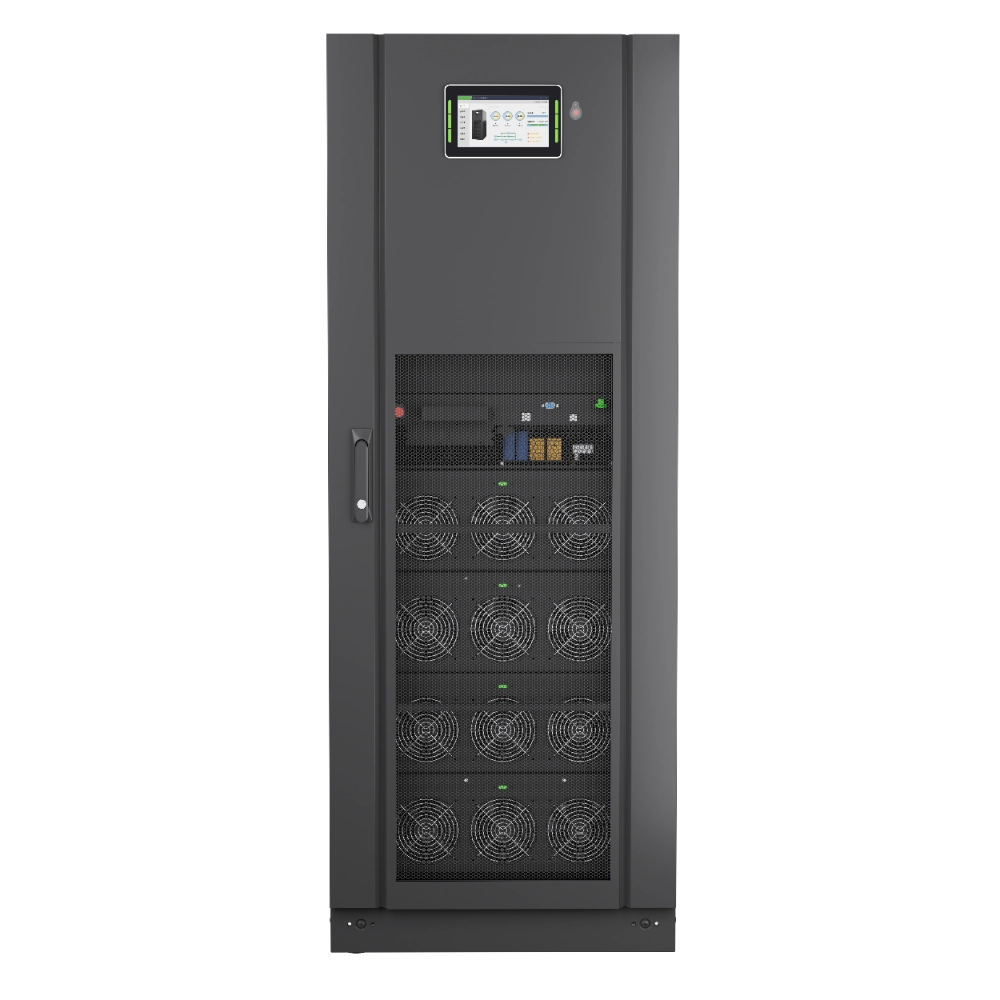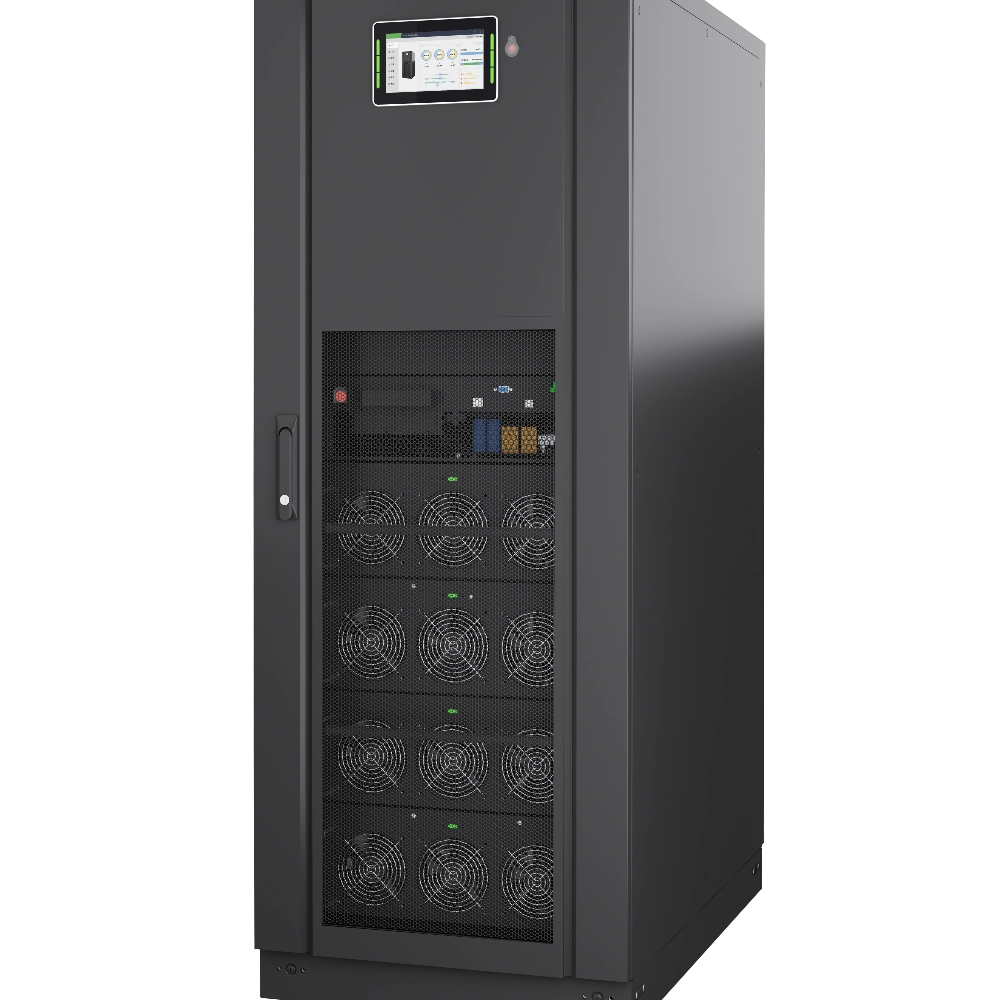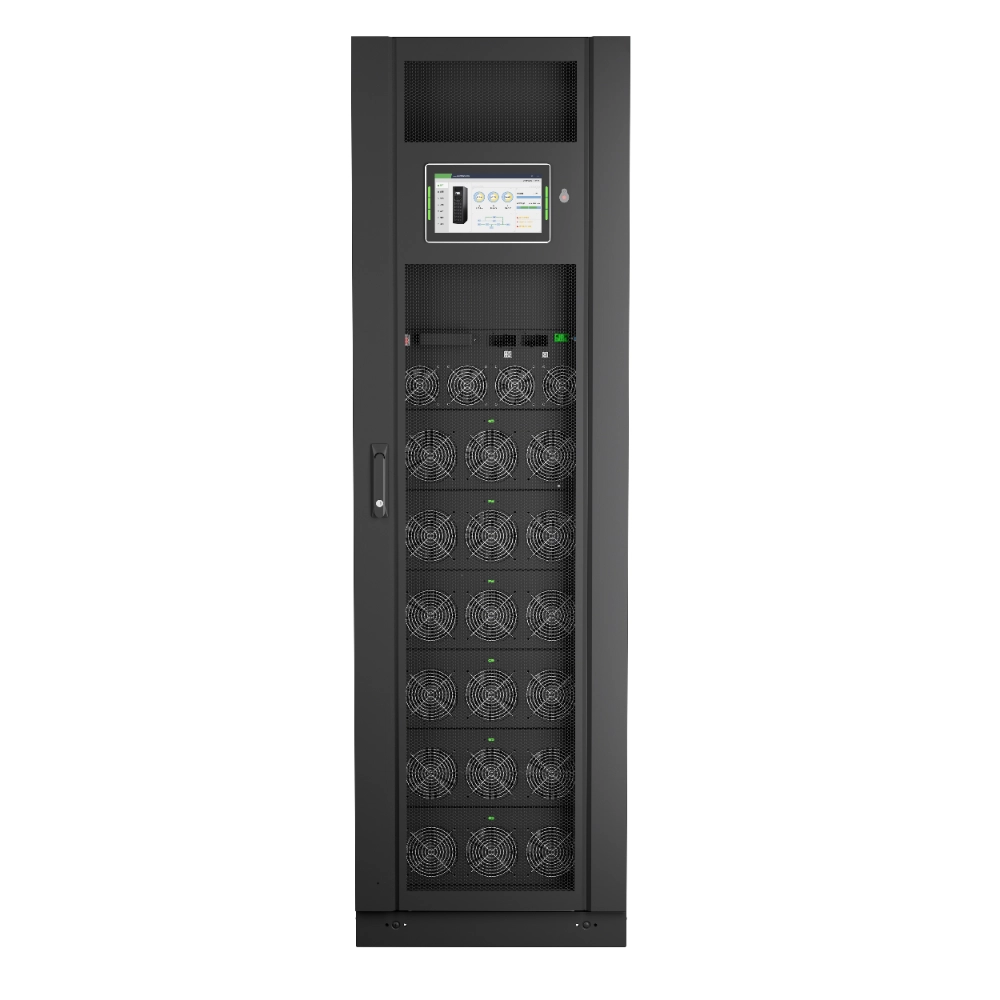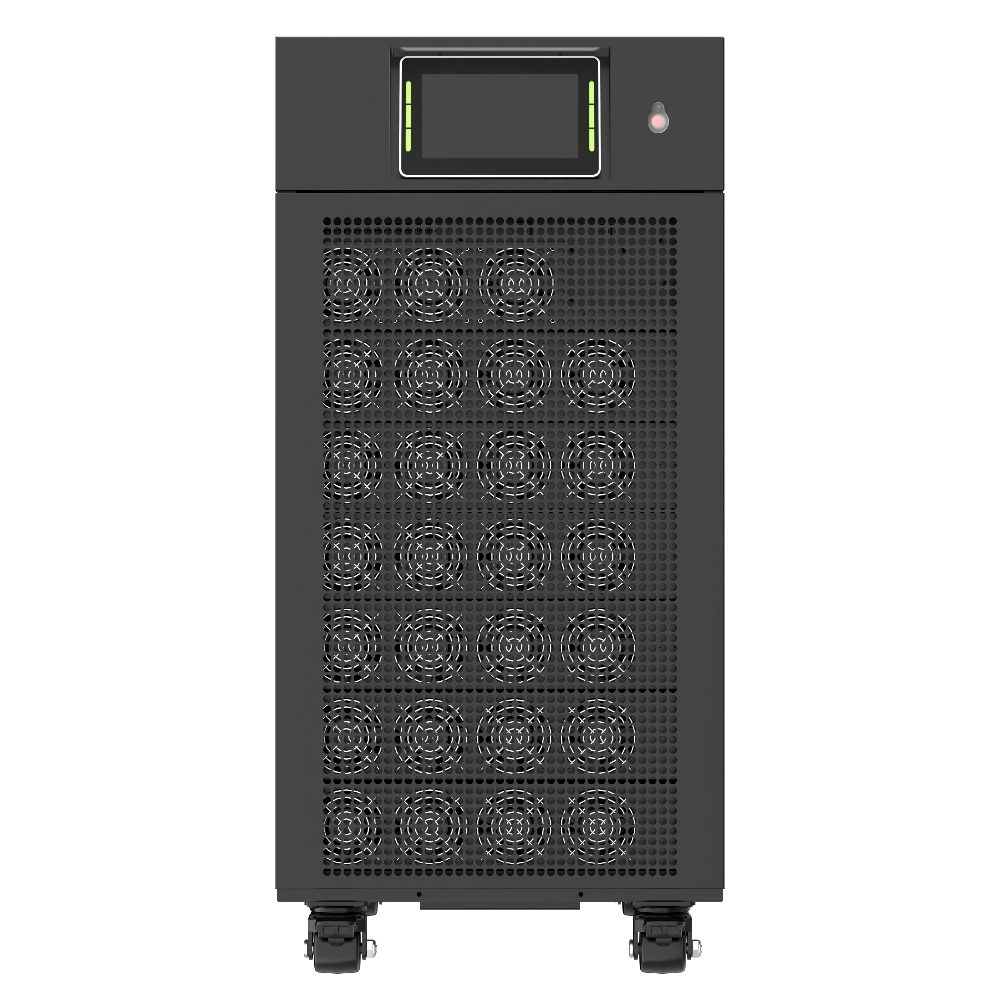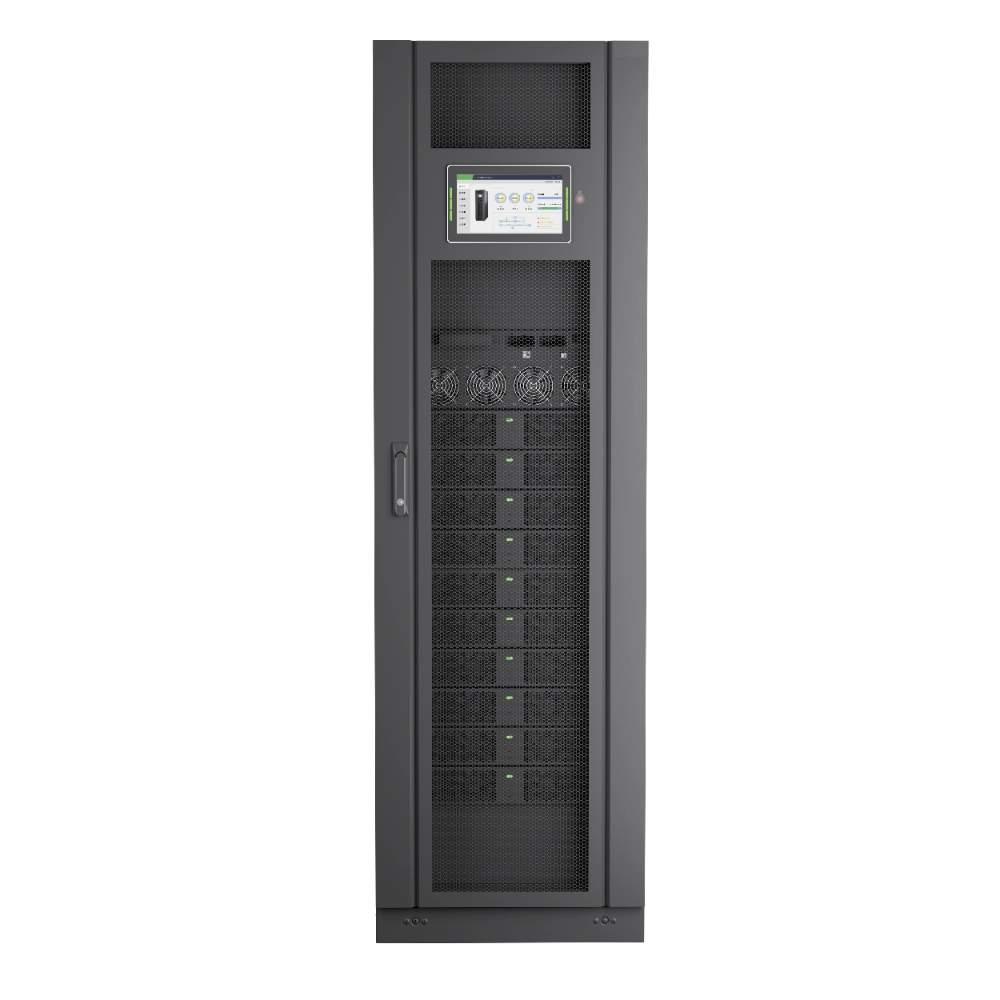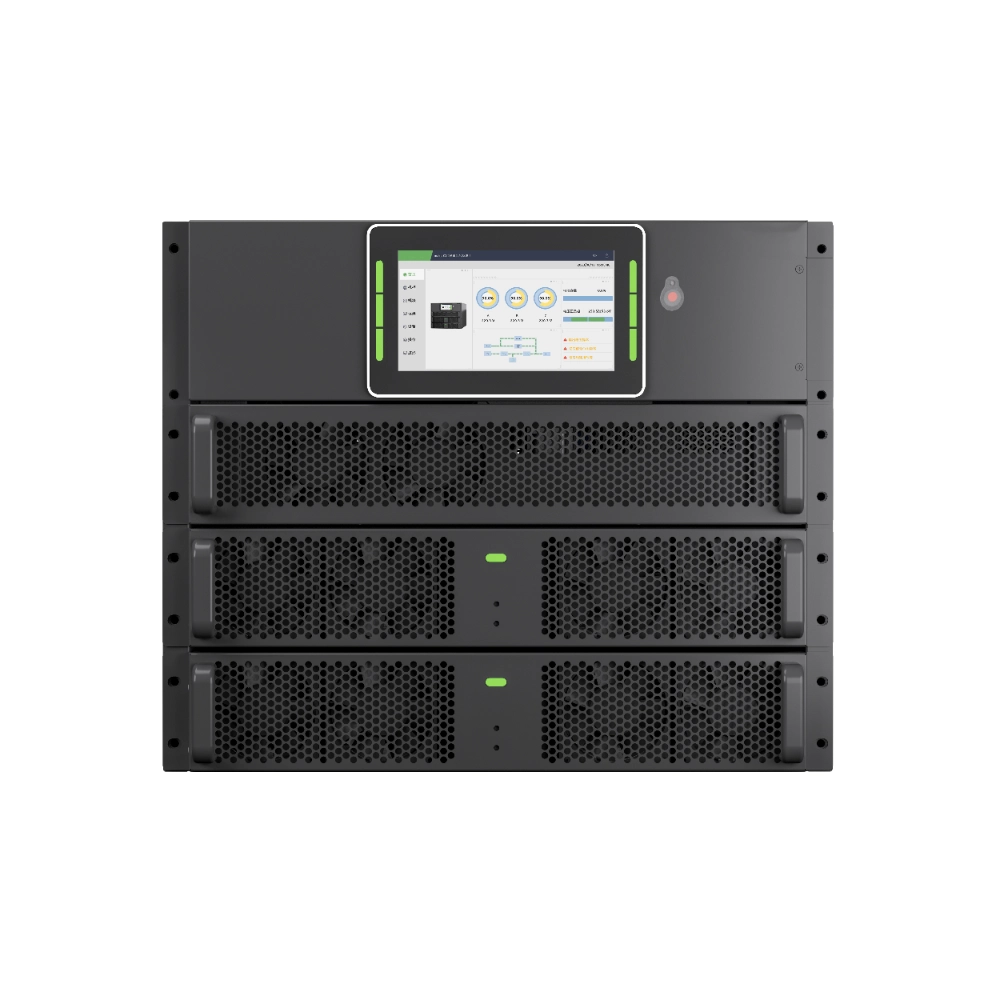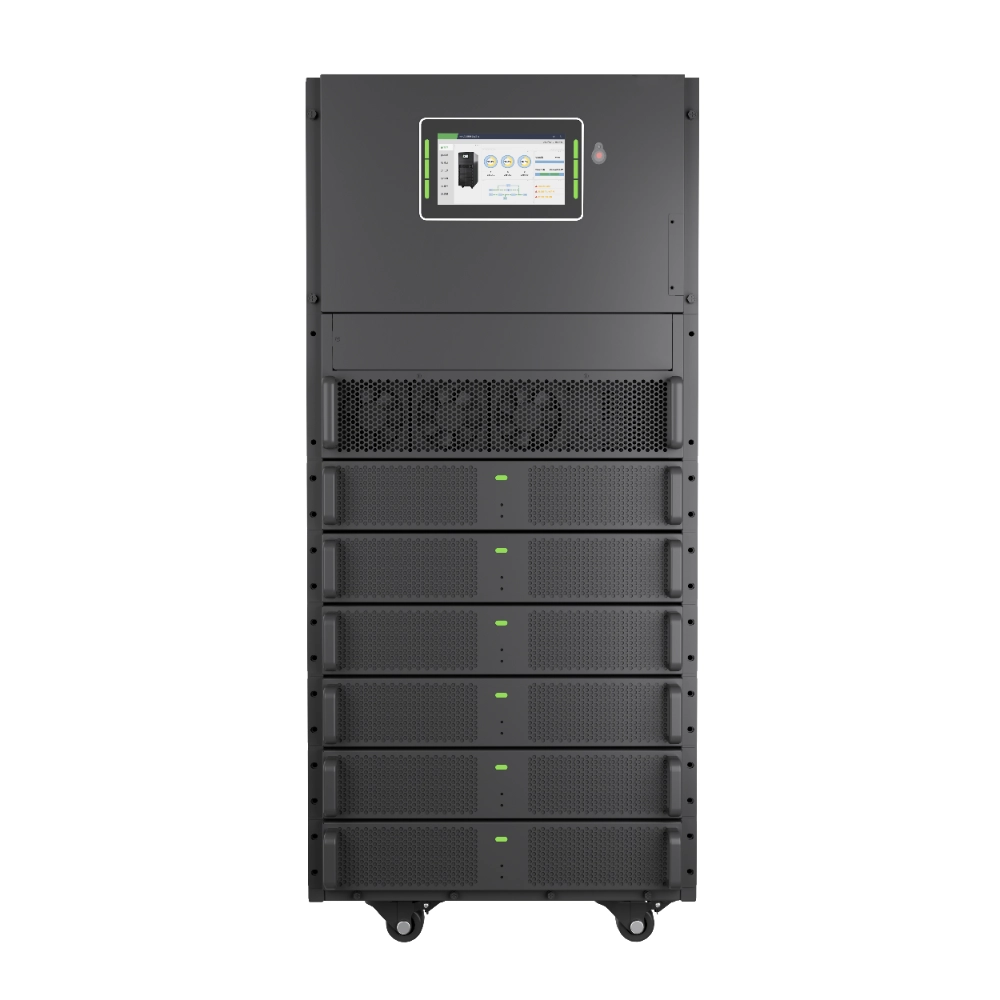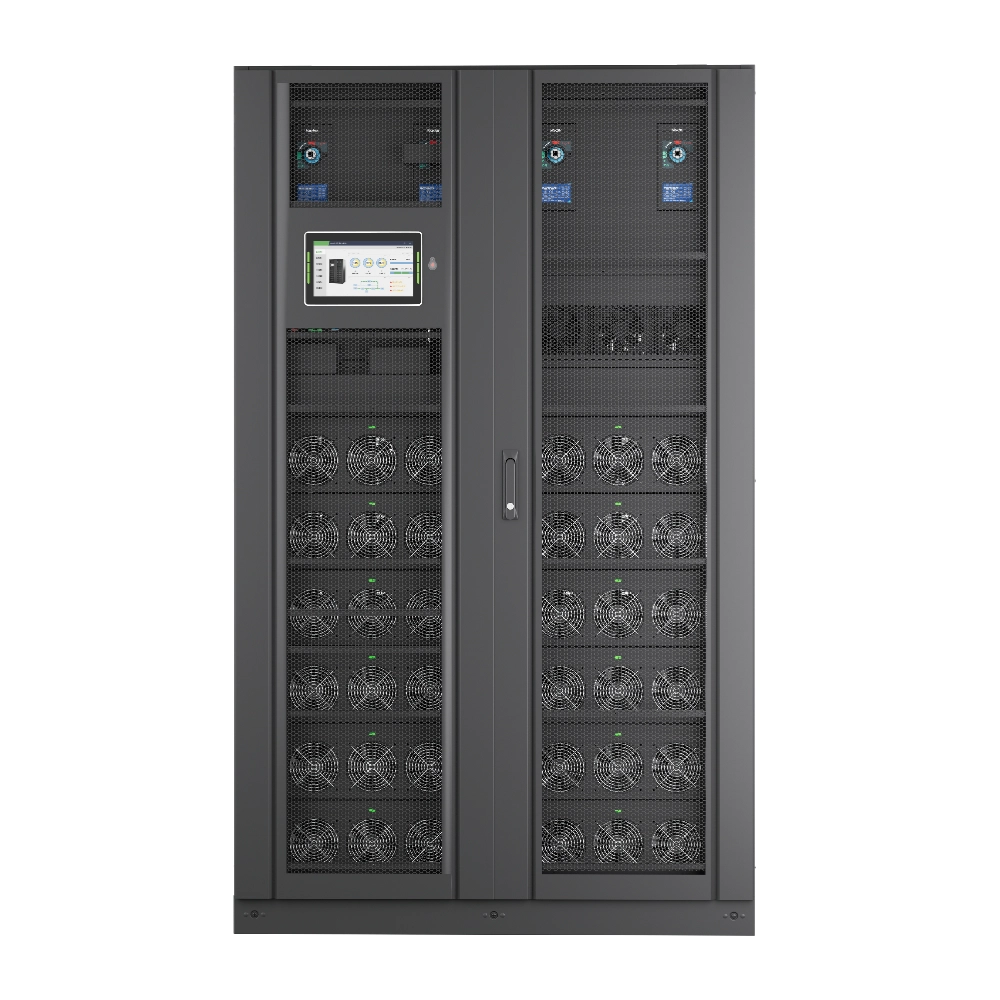Online Modular Intelligent UPS:
This High-Power Online Modular Intelligent UPS product features a high power density and saves over 10% of floor space compared to similar products in the industry, providing users with a more space-saving solution. Meanwhile, it features high cost performance, supports battery centerless design (optional), and can be well adapted to lithium batteries, meeting various application requirements. The product also features outstanding environmental adaptability, with comprehensive protection designs at the system level, board level and device level, ensuring ultimate reliability.
Online Modular Intelligent UPS Key Advantage:
- High power and stability
With a rated capacity of 200KVA/200kW, it is suitable for high-power loads, supporting input voltages of 380/400/415VAC (line voltage) and 220/230/240VAC (phase voltage), with a frequency of 50/60Hz, a power factor >0.99, and an electrical current accuracy THDi<2%.
- Wide voltage and frequency adaptability
Supports an input voltage range of 304-478VAC. When the load drops from 100% to 50%, the voltage decays linearly. It can accept a frequency range of 40 to 70Hz and adapt to different power environments.
- Precise output and low harmonic distortion
The output voltages are 380/400/415VAC (line voltage) and 220/230/240VAC (phase voltage), the output power factor is 1, and the voltage accuracy is ±1.0%. The total harmonic distortion (THDu) is less than 1% under linear load and less than 5% under nonlinear load.
- Rapid dynamic response and recovery
The dynamic response time is less than 5% (20%-80%-20% load step response), and the dynamic recovery time is less than 20ms (0%-100%-0% load step recovery), ensuring a rapid and stable recovery when the load changes.
- Overload protection function
It features multiple overload protections: bypasses after 1 hour at 110% load, bypasses after 10 minutes at 125% load, bypasses after 1 minute at 150% load, and automatically bypasses after 200ms when the load exceeds 150%.
- Precise frequency control and phase stability
The frequency accuracy is 0.10%, supporting a frequency tracking range from ±0.5Hz to ±5Hz, with a default of ±3Hz. The tracking rate is from 0.5Hz/S to 3Hz/S, with a default of 0.5Hz/S. The three-phase phase accuracy is 120°±0.5°, ensuring stable output.
Online Modular Intelligent UPS Application
UPS is widely used across various industries and sectors, including government, finance, telecommunications, education, transportation, meteorology, broadcasting, taxation, healthcare, and energy and power.
1.Government: UPS systems are critical in ensuring the uninterrupted operation of government networks, emergency services, and data centers. During power outages, they help maintain essential services such as public safety communication and disaster management systems.
2.Finance: In the finance sector, UPS provides backup power for bank branches, trading platforms, and ATMs, safeguarding sensitive financial transactions and data during power disruptions.
3.Telecommunications: UPS is crucial for telecom networks, ensuring that communication services, including mobile networks and the internet, remain operational even during electrical failures.
4.Healthcare: In healthcare facilities, UPS ensures that life-saving medical equipment such as ventilators, heart monitors, and surgical systems continue to function during power outages, preventing potential health risks.
5.Education: UPS is used in schools, universities, and research centers to protect computers, servers, and online learning systems, minimizing disruptions in educational services.
6.Energy and Power: In the energy sector, UPS helps maintain power plants, substations, and grid control systems, ensuring stability and reliability of the electricity supply during unforeseen power interruptions.
7.Meteorology: UPS systems provide critical backup power for weather stations and forecasting systems, ensuring the continuous monitoring and prediction of weather conditions without interruption.
In these industries, UPS plays a vital role in ensuring operational continuity and preventing data loss or system failure during power outages.

